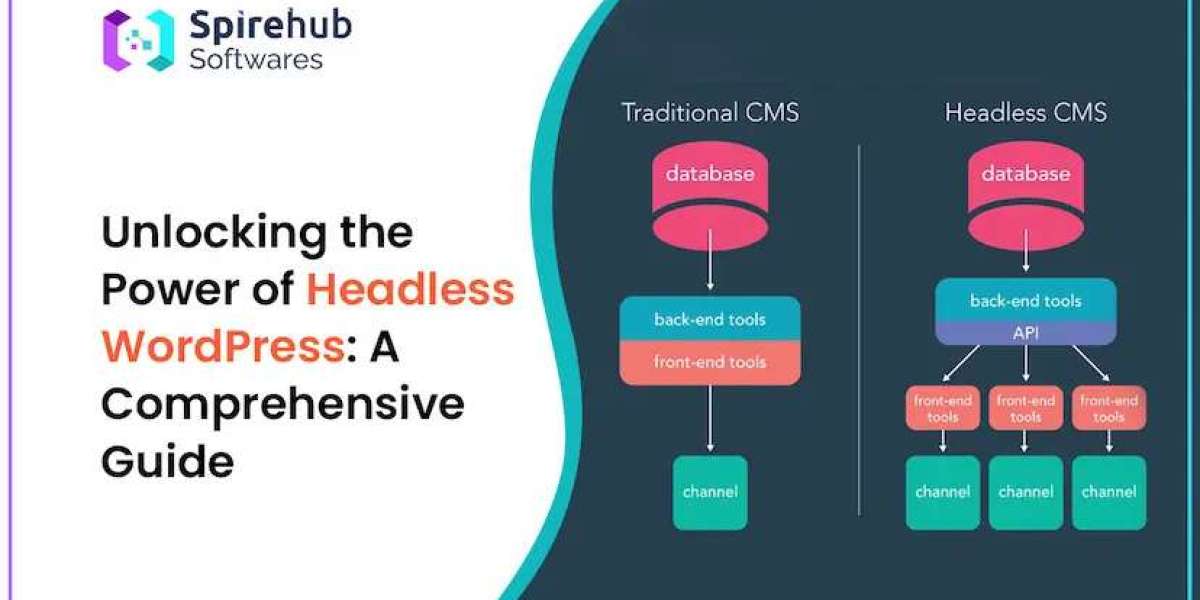WordPress, the ever-popular content management system (CMS), has been a cornerstone for website creation for over a decade. It provides a user-friendly platform for bloggers, businesses, and developers to create and manage websites efficiently. Over time, WordPress has evolved, and one of its latest trends is Headless WordPress. In this comprehensive guide, we will delve into the world of Headless WordPress, exploring its advantages, the steps to create it, and how to build the front end using React as your choice of technology.
What is WordPress?
Before we jump into Headless WordPress, let's briefly revisit what WordPress is. It is a free, open-source CMS that powers over 40% of all websites on the internet. It is renowned for its flexibility, user-friendliness, and extensive library of plugins and themes. The popular CMS operates as a monolithic system where the backend, responsible for content management, is tightly coupled with the front end, which handles the website's presentation.
Understanding Headless WordPress
Headless WordPress, on the other hand, separates the backend and frontend, allowing for a more flexible and dynamic approach to web development. In a Headless WordPress setup, the CMS serves only as the content repository (the "head") and delivers content through APIs. This decoupling empowers developers to choose any technology stack for the front end, making it a versatile solution for various web development projects.
Advantages of Headless WordPress
- Flexibility and Scalability: In this CMS you have the freedom to choose the front-end technology that best suits your project's requirements. This flexibility allows you to create unique and scalable web applications, tailor-made for your needs.
- Better Performance: Separating the frontend and backend improves website performance. Content is fetched via APIs, reducing page load times and enhancing user experience.
- Enhanced Security: By isolating the backend from the frontend, you reduce the attack surface and enhance website security.
- Cross-Platform Compatibility: It is ideal for creating not only websites but also mobile apps and other digital experiences, thanks to its API-driven approach.
- Content Reusability: The content stored can be used across multiple platforms and channels, ensuring consistency in your content marketing efforts.
How to Create a Headless WordPress Site?
Now that we've discussed the advantages, let's delve into the steps to create one, emphasizing building the front-end using React as an example.
Step 1: Set Up Your WordPress Backend
- Install: Begin by setting installing and setting up the CMS on your server or through a hosting provider.
- Install Necessary Plugins: To enable the headless functionality, you'll need plugins like WP REST API or GraphQL API.
- Create Content: Add your content and organize it into custom post types or taxonomies as required.
Step 2: Choose Your Front-End Technology (React)
React is a popular JavaScript library for building user interfaces, and it pairs well with Headless WordPress.
- Set Up a React Project: Create a new React project using create-react-app or a similar tool.
- API Integration: Use the REST API or GraphQL to fetch data from your WordPress backend. You can make HTTP requests to retrieve posts, pages, or any other content types.
- Design the User Interface: Create React components to display your content. You have complete control over the design and layout of your website.
- Implement Routing: Configure routes for different sections of your website using React Router or a similar routing library.
- State Management: Manage state and user interactions with React's built-in state management or a state management library like Redux.
- Styling: Apply CSS or use a CSS-in-JS solution like Styled Components to style your website.
Step 3: Deployment
Once your site with React front-end is ready, you can deploy it on your preferred hosting service.
How to Create a Headless WordPress Site with React?
If you are looking for a more detailed walkthrough of creating a Headless WordPress site with React, here is a step-by-step guide:
- Set Up: Install the CMS and set it up with your preferred hosting provider. Install and activate the REST API or GraphQL plugin to expose the content via APIs.
- Create Content: Add posts, pages, and any custom content types to the backend. Set Up a React Project: Use create-react-app or another React project setup tool to create your front-end application.
- API Integration: Use Axios, fetch, or any other HTTP client to make API requests to the backend. Fetch content like posts and pages using API endpoints.
- Design User Interface: Create React components to display content. Style your website using CSS or a CSS-in-JS library. Implement responsive design for a great user experience on various devices.
- Routing: Use React Router to set up routes for different sections of your website. Configure dynamic routing to display content based on URL parameters.
- State Management: Manage state using React's built-in state management for simpler projects. For complex applications, consider using a state management library like Redux or Mobx.
- Optimize Performance: Optimize images and assets for faster loading. Implement lazy loading for improved page load times.
- Testing: Perform thorough testing of your website to ensure compatibility and functionality across different devices and browsers.
- Deployment: Choose a hosting service for your website, such as Netlify or Vercel, which specialize in hosting static and dynamic web applications. Deploy your React front-end and configure your API endpoints to the backend.
- Monitoring and Maintenance: Regularly update and maintain your CMS and React applications. Implement monitoring and analytics to track website performance and user engagement.
How Headless WordPress can Boosts SEO and Ease the User Experience?
In the realm of website development and SEO, the term "headless WordPress" has gained substantial traction in recent years. It refers to the separation of the frontend and backend of the site, with the frontend relying on a different technology stack, often a JavaScript framework like React or Vue.js. This approach comes with several benefits for SEO, user experience, and overall website performance.
1. Speed and Performance:
It can significantly improve page load times, a crucial factor for SEO. Separating the frontend from the backend reduces server load, enhancing the user experience.
2. Mobile Optimization:
It allows for efficient mobile optimization, which is crucial for SEO since Google prioritizes mobile-friendly websites in search results.
3. Enhanced Security:
By separating the frontend from the backend, it can reduce the attack surface, making it easier to secure your site against threats, which can positively impact SEO.
4. Flexible Design:
Headless architecture provides more flexibility in design, ensuring a responsive and visually appealing website that is also SEO-friendly.
5. Better Content Management:
With headless WordPress, you can easily manage and deliver content to various platforms and devices, which can help you, reach a broader audience and boost SEO.
6. Rich User Experiences:
Interactive web applications built with the CMS provide users with engaging experiences, which can lead to longer session times and reduced bounce rates—factors Google considers when ranking websites.
7. Scalability:
The headless approach enables you to scale your website and handle high traffic without compromising performance or SEO rankings.
It is an excellent choice for those looking to enhance their SEO and provide a superior user experience. However, it's essential to carefully plan and execute the transition, as it can be more complex to set up. When implemented correctly, the headless WordPress can take your website to new heights in terms of SEO and overall web performance.
Conclusion
In the ever-evolving world of web development, Headless WordPress has emerged as a powerful solution that combines the robust content management capabilities with the flexibility of choosing your preferred front-end technology. This decoupled approach has several advantages, including flexibility, enhanced security, and cross-platform compatibility.
If you are looking to embrace Headless WordPress and need a reliable partner to guide you through the process, look no further than SpireHub Softwares. As a dynamic web and app development company, SpireHub specializes in crafting innovative digital solutions, including creating Headless WordPress websites with a variety of front-end technologies. With SpireHub Softwares, you can unlock the full potential of Headless WordPress for your web development projects and stay at the forefront of digital innovation.




Roseline David 4 d
Waw